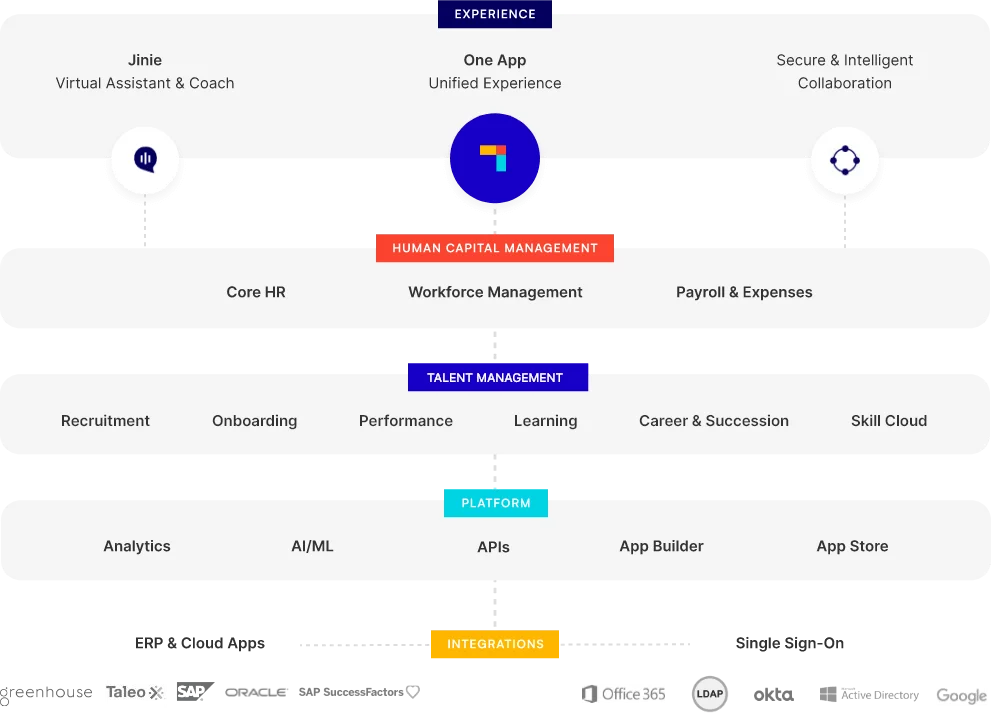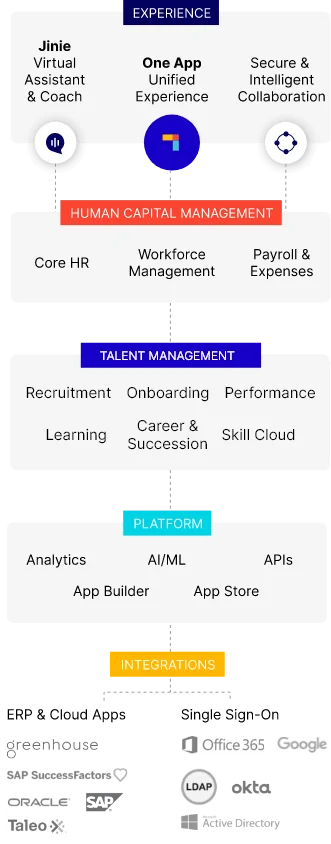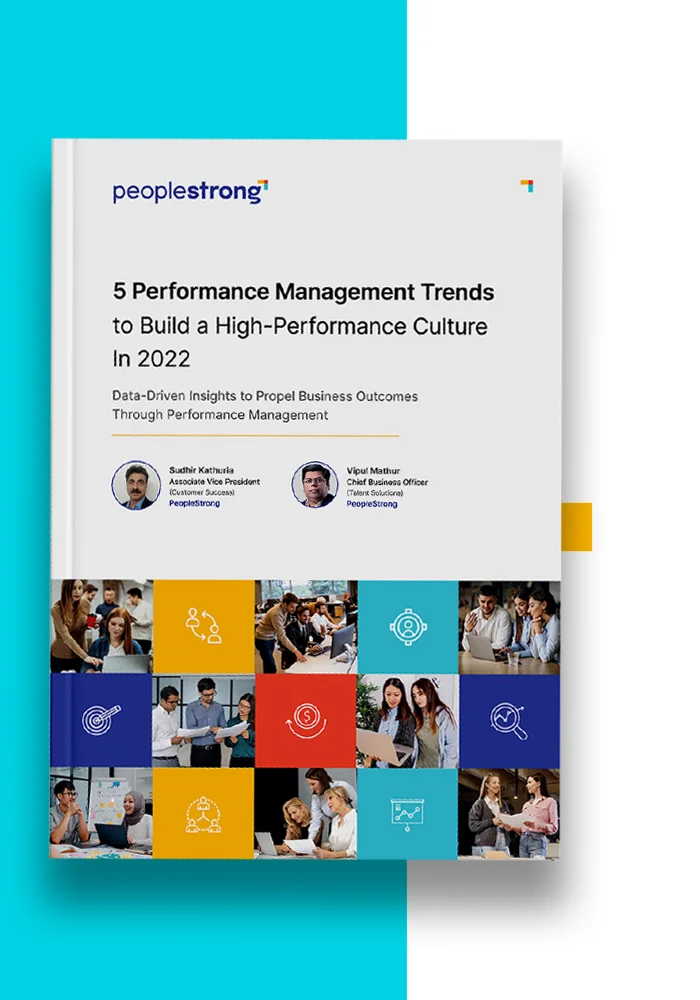In 2024, recruiters are faced with multiple challenges, including varying and changing expectations, nit-picking the right candidate, ensuring timely responses, rejecting emails, onboarding procedures, and whatnot.
This keeps them from being able to respond to immediate needs. Add to that fluctuating demand, and they’re either overwhelmed with requisitions or anxious about demonstrating their team’s worth.
Without a holistic recruitment strategy, organisations face:
- Inconsistent candidate experiences
- Inefficient resource use
- High turnover rates
- Difficulty in attracting top talent
- Inefficiencies in workflow and operations
A thorough recruitment planning process can solve all this.
Your recruitment plan should include more than just a workforce plan. It needs a marketing strategy, an onboarding strategy, a retention strategy, continuous training and development opportunities, and more.
In this blog, we’ll talk about how you can create a comprehensive recruitment plan and overcome the myriad recruitment-related challenges.
Anatomy of a Recruitment Process

Here’s a brief overview of the recruitment process:
- Start: The recruitment process begins.
- Requisition Management: This step involves identifying the need for a new hire and defining the job specifications.
- Job Posting: The vacancy is advertised through various channels to attract candidates.
- Sourcing: Candidates are sourced through multiple methods:
- Sourcing through Vendors: Using third-party agencies or recruiters.
- Sourcing through Employee Referral: Leveraging existing employees’ networks to find potential candidates.
- Sourcing through Internal Job Postings (IJP): Allowing current employees to apply for the position.
- Sourcing through Candidate Portal: Candidates apply directly through the company’s job portal.
- Sourcing through Sourcing Team: The internal recruitment team searches for suitable candidates.
- Screening: The applications are reviewed to shortlist candidates based on the job requirements.
- Selection Process: Various assessment methods such as interviews, tests, and evaluations are conducted to select the right candidate.
- Offer & Joining: Once a candidate is selected, an offer is made, and upon acceptance, the candidate joins the company.
- End: The recruitment process is completed when the candidate joins the organisation.
- Digital Assessments: Use tools for realistic job previews and practical skill evaluations, matching candidates accurately to job requirements.
- Matching Skills: Prioritize the alignment of candidates’ skills with specific job needs to ensure a precise fit.
- Collaborative Hiring: Involve various team members in the hiring decision to gain diverse perspectives and enhance the selection process.
Suggested Read: Detailed Middle East Recruitment Process Guide for HRs
Recruitment Strategy Plan: A 7-Step Guide
Adopting a forward-looking recruitment strategy allows you to anticipate the needs of hiring managers, establish clear expectations, and build a solid talent acquisition pipeline to achieve wider company objectives. Let’s get into it:
Step 1: Pin Down Your Requirements

The first thing would be to frame your requisition management plan. This will act as your blueprint throughout the hiring process. Zero in on:
- Time: How soon do you need the new hire on board?
- Headcount: Are you filling a single position or multiple roles?
- Cost: What’s your budget for this role, considering salary and recruitment expenses?
- Source: Where will you look for candidates? Consider internal resources, job boards, staffing agencies, and social networks.
- Equity: Keep diversity and inclusivity at the forefront to ensure a balanced, fair hiring process.
- Skillset and Cultural Fit: Define the must-have skills and the kind of personality that would gel with your team.
Craft a workflow that streamlines these elements, helping you to cut through the clutter and find your ideal candidate efficiently.
Step 2: Get the Word Out with a Clear Vision

After the requisition plan, you’re ready to broadcast the role you need to be filled. It starts with writing a crystal-clear draft detailing the roles and responsibilities.
Lay it out—what does your team aim to achieve, and how will this role contribute?
Jot down every responsibility and every goal. This clarity is your magnet for the right talent.
Now, think about where your ideal candidates are.
- Are they scrolling through job boards?
- Or are they more likely to spot the job in an employee’s referral post?
- Maybe they’re eyeing opportunities in internal job postings or are active on specialised candidate portals.
Choose your mediums wisely—you want to place your job ad where the right eyes will see it.
By setting the stage with a clear role definition and choosing the right channels, you guide the job posting process toward the sourcing phase.
Step 3: Implement a Sourcing Strategy
You’ve got a great job opening; now, let’s find the talent. You can explore a variety of sourcing methods, including:
- Vendors: Partner with vendors who rank high in performance and can handle bulk postings. Set them up in your system, create clear submission guidelines, and provide them with user training for efficiency.

- Employee Referrals: Roll out an easy-to-use referral program. Regular updates and campaigns will keep your team informed and motivated. Remember, a referred candidate often fits the culture and hits the ground running.

- Internal Job Postings (IJP): Don’t overlook the talent you already have. An internal job posting program allows employees to grow within the company, fostering loyalty and retention.

- Sourcing/Recruitment Team: Your recruiters should be looking for passive and active candidates through job boards and networking.

- Candidate Portals: Ensure your job openings are visible on your career page and easy to apply to, with clear instructions and a streamlined application process.

Here are some tips for making your sourcing process efficient:
- Optimise each sourcing channel for peak performance.
- Have strategies ready for bulk job postings and precise targeting.
- Craft specific, easy-to-understand submission guidelines for vendors.
- Promote employee referrals with clear, compelling incentives.
- Streamline internal job postings to encourage internal career progression.
- Equip your recruitment team with powerful search tools and clear directives.
- Ensure your candidate portal is user-friendly and integrates seamlessly with your website.
Step 4: Screening Process

Once you’ve gathered a pool of candidates, dive into a screening process that’s both thorough and efficient. Here’s how to make sure you’re shortlisting the best:
- Set clear screening criteria that align with the job requirements for an unbiased assessment.
- Use technology for resume parsing and auto-matching to expedite the initial review.
- Regularly update job portals and company databases to ensure you have the latest candidate information.
- Maintain a smooth communication flow with candidates to enhance their experience.
- Craft personalised email templates for notifications to keep candidates informed at every step.
- Continuously train your sourcing team on the latest screening tools and best practices.
Remember, a good screening process respects the candidate’s time and your company’s resources, paving the way for a productive hiring journey.
Suggested Read: A Complete Guide to the Recruitment Screening Process
Step 5: Selection Process
This step should also involve multiple stakeholders, including hiring managers and HR, to ensure a fit both skill-wise and culturally. A well-oiled selection machine not only reflects your company’s professionalism but also saves you time by filtering in the best matches.
Here’s a template to help you nail down your selection process:

You can make your selection process airtight with these steps:
- Design an applicant tracking workflow that suits the hiring type, be it campus drives or experienced professionals.
- Create a standardised interview feedback form to capture essential insights from each candidate interaction.
- Coordinate interview logistics meticulously, setting up the mode and location and assigning interviewers ahead of time.
- Collaborate with assessment partners for any required testing, securing necessary integration keys for a smooth operation.
- Establish clear notification systems to keep candidates in the loop promptly after each selection stage.
Step 6: Offer and Joining

Once you have confirmed the candidate, you can start to verify documents, perform salary fitment based on predefined structures, and prepare the offer letter. Kick off the joining process:
- Cross-check all documents to ensure everything is in order. This isn’t just about ticking boxes; it’s about starting on solid ground.
- Perform a salary fitment. Use predefined structures to offer a fair and competitive package. Remember, clarity here prevents later confusion.
- Draft the offer letter with care. Use templates that reflect the values and professionalism of your company.
- Follow through swiftly with digital or scanned signatures to seal the deal.
- Communicate clearly, sending out offer details and pre-joining instructions without delay.
Before their first day, ensure your new hire is set up for success:
- Use checklists to track pre-joining tasks and keep everyone accountable.
- Set up their onboarding portal so they’re ready to hit the ground running.
- Coordinate with HR, IT, and Admin to prep their workspace, IT access, and any necessary assets.
You want this transition to be smooth for your new hire, showing them they’ve made the right choice. The effort you put into a seamless offer and joining experience lays the groundwork for a strong, lasting professional relationship.
Step 7: Onboarding and Integration

Initiate a comprehensive onboarding process that includes providing the new hire with necessary resources such as laptops, access cards, and email IDs. Prepare a detailed onboarding checklist for various stakeholders and ensure the new hire is introduced to the team and integrated into the company culture efficiently.
- Kick-off with an onboarding checklist. Make it detailed, covering all the necessary steps to ensure nothing slips through the cracks.
- Ensure your new hire has the tools they need from day one—laptop, access card, email ID. These are the keys to their new kingdom.
- Assign roles for your onboarding team. Everyone should know their part in welcoming the new employee.
- Personalise their welcome. A warm introduction to the team and a tour of their new work environment can make all the difference.
- Facilitate cultural integration. Arrange meet-and-greets, team lunches, or mentoring programs to immerse them in the company ethos.
How to Measure the Success of Your Recruitment Strategies
Measuring the success of your recruitment strategy is essential to understand its efficiency, identify areas for improvement, and ensure alignment with organisational goals. Here’s how you can keep tabs on effectiveness:
- Time to Fill: Track the time it takes from posting a job to signing the offer. A streamlined process is fast but thorough.
- Quality of Hire: Assess the performance and contribution of new hires over their first year. High performers indicate a successful strategy.
- Cost per Hire: Calculate the total costs involved in the recruitment process divided by the number of hires. Efficiency doesn’t have to be expensive.
- Candidate Experience: Gather feedback from candidates, regardless of the outcome. Positive experiences can turn even rejected candidates into future assets.
- Offer Acceptance Rate: A high acceptance rate suggests your offers are competitive and your company is desirable.
- Employee Retention Rate: Long-term employee retention indicates successful integration and satisfaction, key markers of a sound recruitment process.
Remember, the goal is not just to hire but to improve and evolve your entire pipeline continuously—only that would ensure that you make every recruitment effort count.
Recruitment Strategy Example: Streamlining Operations at Pacific Healthcare with PeopleStrong
Pacific Healthcare, a prestigious name in Asia’s healthcare sector, faced multifaceted challenges in its HR operations.
They needed a solution that could not only handle local language support for a diverse employee base but also streamline payroll processing, integrate job boards for efficient recruitment, and enhance overall HR functionalities.
They turned to PeopleStrong, and here’s the transformation they achieved:
- Localised Solution: PeopleStrong tailored their HRIS and recruitment modules to cater to local languages, enhancing the employee self-service experience across Thailand, the Philippines, Vietnam, Myanmar, and Cambodia.
- Integration with Local Job Boards: By seamlessly connecting local job boards with Pacific Healthcare’s career portal, PeopleStrong facilitated a smoother recruitment process. This enabled the firm to tap into local talent pools effectively.
- Automated Payroll and Overtime Management: The introduction of an automated payroll system, including sophisticated overtime tracking, significantly reduced manual errors and inefficiencies. This ensured overall accuracy in the employee compensations.
- Unified Platform for Diverse Needs: PeopleStrong’s comprehensive HR suite, including HRIS, Recruit, Onboarding, Payroll, and Learning modules, offered a single platform solution that unified the employee experience across different geographies.
Here’s what the impact looked like:
- Within just three months, Pacific Healthcare saw a huge jump in people using their mobiles for HR stuff and more HRIS transactions than ever before.
- They nailed payroll processing with 100% accuracy, squashing those pesky overtime and safe harbour policy issues.
- Plus, they automated the whole leave and attendance thing, saving heaps of time and making things way more efficient.
Pacific Healthcare’s collaboration with PeopleStrong is a testament to how tailored HR solutions can revolutionise recruitment and payroll processing pipelines.
In Conclusion
A streamlined recruitment and onboarding process not only sets the stage for a productive workforce but also reflects your organisation’s efficiency and culture. The next step for you would be to partner with a system that streamlines these efforts.
PeopleStrong, with its AI-powered JD-CV matchmaking and omnichannel sourcing, can help you achieve twice the hiring with half the effort. With PeopleStrong, you can:
- Leverage advanced AI for precise JD-CV matchmaking, enhancing fitment accuracy.
- Expand your talent pool with borderless hiring across multiple channels.
- Ensure adherence to local and international laws like GDPR, backed by robust data security.
- Offer a full suite from recruitment to retirement, including Talent Acquisition and Core HR functions.
- Streamline HR tasks with features like Gen AI for HR, Jinie Chatbot, and comprehensive analytics.
PeopleStrong simplifies the complexities of recruitment and transforms onboarding into a delightful experience for both recruiters and candidates.
It’s time to empower your talent acquisition teams with technology that frees them from the daily grind and lets them focus on what they do best—building a great team. Get started today!













